There are between 36-41 species of wild cat depending upon how you classify them. The classification of the cats (called taxonomy) is still somewhat in discussion although more settled than before. Genetic molecular analysis has allowed scientists to be more precise about classifying cat species. This has reduced the number of species. I think it’s fair to say that there are more than 36 but less than 41 wild cat species as classified as at January 6, 2022. The link below takes you to an Infographic which shows how the species are linked. The Infographic contains the domestic cat which is always listed among the wild cat species. That page also contains a discussion about the classification of the species. In some ways taxonomy is arbitrary. Humans decide how to classify the species. They decide the rules and how the rules are applied.
RELATED: Infographic – the cat family classified (taxonomy)
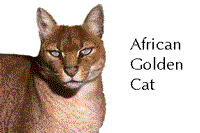
- Scientific name: Caracal aurata
- Weight kgs: 8-16
- Distribution: Equatorial Africa
- Habitat: Forest
- Prey: Rodents (70%)
- Status in wild: Vulnerable

- Scientific name: Leopardus jacobita
- Weight kgs: 4-5
- Distribution: The Andes Mountains
- Habitat: Rocky & mountainous
- Prey: Mountain Vizcacha
- Status in wild: Endangered
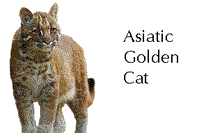
- Scientific name: Pardofelis temminckii
- Weight kgs: 8-16
- Distribution: Tibet to Sumatra
- Habitat: Prefers forest
- Prey: Small mammals
- Status in wild: Near Threatened

- Scientific name: Pardofelis badia
- Weight kgs: 3-4
- Distribution: Borneo
- Habitat: Tropical forest
- Prey: Small animals
- Status in wild: Endangered
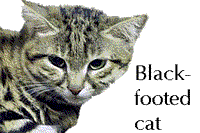
- Scientific name: Felis nigripes
- Weight kgs: About 2
- Distribution: Southwest Africa
- Habitat: Dry and open
- Prey: Gerbils 75%
- Status in wild: Vulnerable
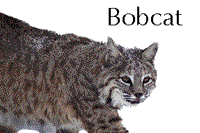
- Scientific name: Lynx rufus
- Weight kgs: 4-18
- Distribution: North America
- Habitat: Wide variety
- Prey: Rabbits and hares
- Status in wild: Least Concern
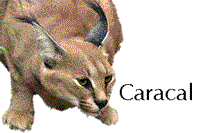
- Scientific name: Caracal caracal
- Weight kgs: 6-20
- Distribution: Central & South East Africa
- Habitat: Prefers open grassland
- Prey: Guinea fowl to small antelopes
- Status in wild: Least Concern

- Scientific name: Acinonyx jubatus
- Weight kgs: 21-65
- Distribution: Fragmented: Africa, Iran, Azerbaijan
- Habitat: Namibian grassland
- Prey: Impala
- Status in wild: Vulnerable

- Scientific name: Felis silvestris bieti
- Weight kgs: 6.5-9
- Distribution: Central China
- Habitat: Mountainous terrain
- Prey: Pika
- Status in wild: Vulnerable

- Scientific name: Neofelis nebulosa
- Weight kgs: 12-23
- Distribution: East Asia
- Habitat: Forest
- Prey: Arboreal & terrestrial vertebrates
- Status in wild: Vulnerable

- Scientific name: Prionailurus viverrinus
- Weight kgs: 5-12
- Distribution: Asia
- Habitat: Near water – thick cover
- Prey: Fish and ground animals
- Status in wild: Vulnerable
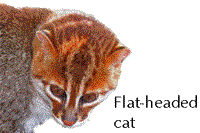
- Scientific name: Prionailurus planiceps
- Weight kgs: 1.5-2.2
- Distribution: Thailand, Malaysia, Sumatra, Borneo
- Habitat: Associated with water
- Prey: Fish
- Status in wild: Endangered
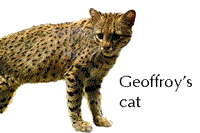
- Scientific name: Leopardus geoffroyi
- Weight kgs: 2.6-6.5
- Distribution: Southern areas of S.America
- Habitat: Temperate and subtropical. Scrubby areas along rivers
- Prey: Small rodents and birds
- Status in wild: Least Concern

- Scientific name: Panthera onca
- Weight kgs: 31-121
- Distribution: Central & South America
- Habitat: Dense tropical forest
- Prey: Wide range of prey
- Status in wild: Near Threatened

- Scientific name: Puma yagouaroundi
- Weight kgs: 3.5-7
- Distribution: Mexico through to Argentina
- Habitat: Wide variety
- Prey: Small prey, mainly rodents, birds, reptiles
- Status in wild: Least Concern

- Scientific name: Felis Chaus
- Weight kgs: 3-10
- Distribution: Turkey & Egypt to Vietnam
- Habitat: Swamps
- Prey: Small mammals
- Status in wild: Least Concern

- Scientific name: Leopardus guigna
- Weight kgs: 1.5-2.8
- Distribution: Chile and Argentina
- Habitat: Forest
- Prey: Mainly small mammals
- Status in wild: Vulnerable
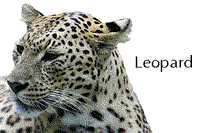
- Scientific name: Panthera pardus
- Weight kgs: 17-70
- Distribution: Widest of all the wild cat species
- Habitat: Many different habitats
- Prey: Wide variety
- Status in wild: Near Threatened

- Scientific name: Prionailurus bengalensis
- Weight kgs: 2-4
- Distribution: Asia – the widest of all small wildcats
- Habitat: Forest – various
- Prey: Small mammals to insects
- Status in wild: Least Concern
- Subspecies: Iriomote

- Scientific name: Panthera leo
- Weight kgs: 90-216
- Distribution: Sub-Saharan Africa & Northwestern India
- Habitat: Wooded grassland
- Prey: Principally ungulates
- Status in wild: Vulnerable
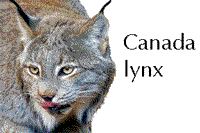
- Scientific name: Lynx canadensis
- Weight kgs: 5-17
- Distribution: North America – see map for all lynx species.
- Habitat: Typically coniferous forest
- Prey: Snowshoe hare
- Status in wild: Least Concern
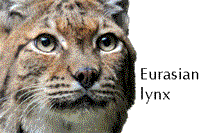
- Scientific name: Lynx lynx
- Weight kgs: 12-38
- Distribution: Europe (patchy distribution), through to most of Russia and then Central Asia and also Scandinavia. See map.
- Habitat: Forest
- Prey: Principally small mammals
- Status in wild: Least Concern
- Rewilding lynx
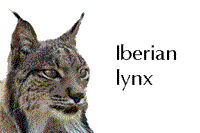
- Scientific name: Lynx pardinus
- Weight kgs: 7-16
- Distribution: Spain, Portugal. See map.
- Habitat: Scrubland to marshes
- Prey: Rabbits
- Status in wild: Critically endangered

- Scientific name: Otocolobus manul
- Weight kgs: 2.5-4.5
- Distribution: Russia, south to China and Afghanistan
- Habitat: Asian uplands, hillsides, rocky outcrops
- Prey: Pika, gerbils, rodents, partridge
- Status in wild: Near Threatened
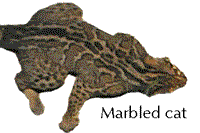
- Scientific name: Pardofelis marmorata
- Weight kgs: 2-5
- Distribution: Asia
- Habitat: Lowland tropical forest
- Prey: Birds, rats, lizards
- Status in wild: Vulnerable

- Scientific name: Leopardus wiedii
- Weight kgs: 3-4
- Distribution: Mexico, Central and S. America
- Habitat: Primary forest
- Prey: Small rodents, birds, fruit
- Status in wild: Near Threatened

- Scientific name: Leopardus pardalis
- Weight kgs: 6-16
- Distribution: Mexico, Central & South America
- Habitat: Tropical forest to mangrove
- Prey: Mainly small mammals
- Status in wild: Least Concern

- Scientific name: Leopardus tigrinus
- Weight kgs: 1.5-2.8
- Distribution: Central & S. America
- Habitat: Forest
- Prey: Rodents, lizards, insects
- Status in wild: Vulnerable

- Scientific name: Leopardus colocolo
- Weight kgs: 1.7-3.7
- Distribution: South America
- Habitat: Mainly open grassland
- Prey: Small vertebrae but a generalist
- Status in wild: Near Threatened

- Scientific name: Puma concolor
- Weight kgs: 25-80
- Distribution: North and South America
- Habitat: Wide variety
- Prey: From mice to moose
- Status in wild: Least Concern

- Scientific name: Prionailurus rubiginosus
- Weight kgs: 0.8-1.6 (world’s smallest cat)
- Distribution: India & Sri Lanka
- Habitat: Moist & dry deciduous forest
- Prey: Small mammals & birds
- Status in wild: Vulnerable

- Scientific name: Prionailurus rubiginosus
- Weight kgs: 0.8-1.6 (world’s smallest cat)
- Distribution: India & Sri Lanka
- Habitat: Moist & dry deciduous forest
- Prey: Small mammals & birds
- Status in wild: Vulnerable
LINK TO MORE

- Scientific name: Leptailurus serval
- Weight kgs: 7-18
- Distribution: Africa
- Habitat: Grassland
- Prey: Small mammals
- Status in wild: Least Concern

- Scientific name: Panthera uncia
- Weight kgs: 22-50
- Distribution: High mountains of Central Asia
- Habitat: Dry alpine steppe above treeline
- Prey: Primarily blue sheep & large amount of plant matter
- Status in wild: Endangered

- Scientific name: Panthera tigris
- Weight kgs: 75-320
- Distribution: Asia and Russia
- Habitat: Tropical forest to birch woodlands
- Prey: Extremely wide, frogs to elephants
- Status in wild: Endangered to Extinct depending on subspecies

- Scientific name (European): Felis silvestris silvestris
- Scientific name (African/Asian): Felis silvestris lybica & ornata
- Chinese desert cat
- Weight kgs: 2.4-7.7
- Distribution: Wide
- Habitat: Varied
- Prey: Small mammals, mainly rodents
- Status in wild: Least Concern
Classification of wild cat species
The classification of wild cat species is work in progress. Taxonomy is an evolving science. There have been marked changes in classification over the preceding 100 years. Currently (at 2011) there are 36 species of wild cat according to the premier book on wild cats: Wild Cats Of The World by Mel and Fiona Sunquist. They follow CITES classification, World Conservation Monitoring Center (WCMC) and Wild Cats Status Survey and Conservation Plan. The book was published 2002. The situation can change. DNA testing has changed things. I have listed the Sunda clouded leopard as a separate species but written about it within the clouded leopard page.
The number of species of wild cat varies from 36 to 40 (Wikipedia). The variations are probably due to subspecies being classified as species. There is still disagreement (lion taxonomy). This is because all the cats have a very similar morphology (the form, structure and features of an animal). All cats, except the cheetah, behave in a similar way too. All the wild cats evolved from eight lineages it is currently believed.
It is surprising to note that there are a number of species that are little known. Yet we are still destroying their habitat. It is probably a case of out of sight and out of mind. These are secretive small wildcats living in dense forest avoiding people.
Photographic Credits (1)
Except for Jim Sanderson Ph.D., creative commons licenses granted by the photographers have permitted me to create derivatives of the originals. Thank you.
Wild cat at top of page – by ingirogiro
African golden cat – copyright Terry Whittaker.
Andean mountain cat – Believed Jim Sanderson Ph.D.
Asiatic golden cat – Karen Stout.
Bay cat – Jim Sanderson Ph.D.
Black-footed cat – Unknown, public domain.
Bobcat – ForestGladesiWander (Flickr).
Caracal – prb10111—awol (Flickr).
Cheetah – tom raftery (Flickr)
Chinese desert cat – Believed Jim Sanderson Ph.D.
Clouded leopard – cliff1066 (Flickr).
Fishing cat – cliff1066 (Flickr).
Flat-headed cat – Jim Sanderson Ph.D.
Geoffroy’s cat – MrGuilt
Jaguar – Eric Kilby
Jaguarundi – law_keven
Jungle cat – Dr Tarak N Khan
Kodkod – Jim Sanderson Ph.D.
Leopard – npmeijer
Comment
Go to the next page for links to many pages commenting on various issues to do with the wildcat species.
Photograph credits (2)
Leopard cat – Wikimedia-commons author: Kuribo
Lion – Leszek Leszczynski
Lynx – Canadian – -digitalART2
Lynx – Eurasian – belgianchocolate
Lynx – Iberian – Wikimedia commons (c) Programa de Conservación Ex situ del Lince Ibérico www.lynxexsitu.es
Manul – jinterwas
Marbled cat – Wikimedia commons Johan Embréus (Embreus (talk))
Margay – brian.gratwicke
Ocelot – jennicatpink
Oncilla – Wikimedia common Geigy
Pampas cat – Wikipedia commons ZooPro
Puma – CaliforniaDFG
Rusty-spotted cat – Wikimedia commons UrLunkwill
Sand cat – Yinghai
Serval – Michael Broad
Snow leopard – Macpedia
Tiger – wwarby
Wildcat – natalief
Sources
1. Wild Cats Of The World – by Mel and Fiona Sunquist. Recognized as the best book on the wild cats.
2. Occasionally Wikipedia.
3. Great Cats – Majestic Creatures of the Wild – edited by Dr. John Seidensticker and Sr. Susan Lumpkin. Best wild cat photographs.
4. Wild Cats of the World – by David Alderton
5. IUCN Red List of Threatened Species™
6. Various miscellaneous websites on an ad hoc basis.
7. Myself.
Note all photos are licensed for derivates under the relevant creative commons license. Jim Sanderson’s photos are not licensed for derivatives. I have taken a liberty in making derivatives for this page. Although in return I promote his work and the conservation of the small cats.
About the classification of the wild cat species (taxonomy). Note: Although it does make things less clear and more complicated, it is worth noting from the outset that there is still disagreement on the number of species of wild cats. Thirty-six is the most widely recognised figure. At Sept. 2012, the Wikipedia authors list 40 wild cats. A recent reclassification (Nov 2017) lists 41 species.
The difference is because they have added these cats: (a) a species of the leopard cat, the Iriomote Cat (Prionailurus bengalensis iriomotensis) which is referred to by me as a subspecies (b) Pantanal Cat (Leopardus braccatus) and Colocolo (Leopardus colocolo) which are treated by me as the pampas cat. I have 37 separate species listed because I have the Chinese desert cat as a separate species of wildcat and not a subspecies. I may change this in due course. Complicated? Yes, but whenever you write about or study the wild cats you have to face that problem. At present you can’t say with complete conviction that there are 36 different wild cats.
My advice is that if you are writing about the wild cats you should start with something like this (if you want to, feel free to use this):
“At [put date], there is still disagreement by scientists on the number of wild cat species. The majority agree that there are 36 wild cats. I will proceed on the basis that there are 36 species of wild cat based on the work of the Sunquists in their definitive work: The Wild Cats Of The World, while being alert to changes due to the evolving science of taxonomy…..”
Take me to the credits for the photographs on this page
Status in the wild is as at 2011 based on IUCN Red List™. See IUCN Red List™ details for the wild cats. Domestic cats were once wildcats. The best sources of informationabout wild cat species have been used in compiling this information. You can rely on this information. See lots more pages on the wild cats.

Opportunities for sponsored posts are needed
“Greeting of the day
I have came across your site pictures-of-cats.org
Could you please let me know how much it will cost to publish an article on your site, just like the following one:
https://pictures-of-cats.org/historic-victory-for-white-coat-waste-project-in-ending-va-dog-testing-experiments.html
and have a link on it towards a Fashion site
Regards”
Sorry, I don’t do them. And when you think about it, it would be inappropriate to write a story about animal abuse as you suggest and link to women’s fashion! That can’t be right.
cool
I saw an odd-looking cat today. I was so intrigued that I had to look it up, so I typed “indigenous wild cats in California”. I’m certain I saw a Jaguarundi today, “in California”! Only of all the pictures I saw online none of them had a ring around the tail. The cat I saw today had 3 or 4 rings on its tail. I’m no expert on cats but I know what I saw! I’m a technician, I was working on a grower’s property (flower grower)in Half Moon Bay California on Cabrillo Hwy. also known as Hwy.1 It was about 2pm in the afternoon, broad daylight and it was sniffing around a pallet stacked roughly 10′ high it stood up on its hind legs with its front paws against the stack. It was dark brown almost black with again 3 or 4 rings around its tail. Its face struck me as almost the face of a Mongoose. And that’s what I thought was so amazing? At first I wasn’t sure what it was? I still don’t know. I’ve only ever seen Mongoose on the beach of Hanama Bay in Hawaii. But after looking it up I’m “CERTAIN” that I saw a Jaguarundi today in California! It was beautiful!
Thanks David. Some people like to have a pet jaguarundi. There are quite a few in America. Sometimes they escape as the confinements of a home are too tight for them. That’s a possibility. Although they do not have rings on their tail. So, I am not sure what you saw.